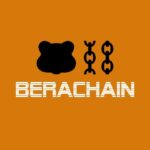- The R2 Testnet attracted over 200,000 users and reached 10 million deals in under three weeks.
- R2USD is supported by real-world assets such as government bonds and rental income, adding reliability to the Stablecoin model.
Less than three weeks after the official testnet was launched, the R2 Stablecoin protocol has already attracted the attention of many people. The project, launched on April 17, 2025, has already attracted over 200,000 participants and has recorded over 10 million transactions.
In fact, in the early years, over 60,000 unique addresses were participating, allowing us to control over 50% of the transaction volumes of the Ethereum Sepolia network. Imagine a new project. But it quickly dominates such a crowded test network.
Stablecoin Protocol R2, which includes RWA-driven harvests, announced that its testnet had attracted over 200,000 participants and processed more than 10 million transactions within three weeks. The underlying assets of R2 include US Treasury tokens on-chain, compliant money market funds…
– WU Blockchain (@wublockchain) May 10, 2025
Where hype meets real-world support
Numbers aren’t the only ones that prove that. The community is also growing rapidly. The R2 Discord channel is already packed with over 58,000 members who actively chat, ask questions and discuss strategies.
Behind the hype is the promise of actual profits from real-world assets such as US government bonds, money market funds, and real estate rental income. This is not an unfounded defi dream like some of the projects of the past. There is a clear and traceable basis.
R2 doubles with actual utility and reach
Furthermore, R2 shows that it’s not a project that is good at marketing. On April 16, 2025, one day before Testnet’s launch, they officially became Ondo Finance’s liquidity provider.
After passing KYB verification and asset checks, the R2USD stubcoin will be supported by Ousg. This is a US government bond token. This is undoubtedly one of the most specific “real world assets” collateral currently in the Stablecoin space.
Interestingly, the R2 also introduces a rather unique incentive system. There are two types of points. It is a pulse that can be given to on-chain activity and product use signals and social contributions such as posts and community missions. All of these points can then be converted to R2 tokens when the mainnet starts up.
For those who frequently build R2USD testnets and are active in the community, this could be a pretty promising start. If you were involved from the start and were a bit active, imagine you got a token when it was released. It could have been the first step in growing your crypto portfolio.
On the other hand, I don’t want to play R2 on one network. They announced plans to expand the testnet to several additional networks over the next two weeks. The goal is clear. It’s about expanding access, attracting more participation and building a truly multi-chain protocol foundation. Because in one ecosystem, especially in today’s world where everything is network, it ultimately stagnates.
Meanwhile, CNF has previously highlighted the metaplatform, which is also beginning to look at Stablecoins again. They reportedly are exploring cross-border payment schemes for digital creators through Stablecoins and are talking to several digital asset companies.
But of course there is still a shadow of regulatory uncertainty that plagues this ambitious plan. Unlike the R2, which appears to have a more realistic approach, there is a clear flow based on actual assets, and its community is beginning to form from underneath rather than from the tech giant’s headquarters.














